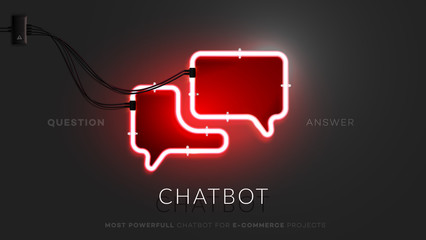Chatbots can perform a range of functions, both internally and consumer facing. From modernising HR to improving customer experience, the software robots are beginning to disrupt how the employee and the customer engages with their organisations and brands. As AI continues to enter the frame, this will speed up their intelligence and capabilities.
Chatbots’ current and potential functions are well documented, but we want to dissect the technology across three main questions: What is a chatbot? How to make a chatbot? Why chatbots fail?
HR, chatbots and robotic process automation: key for digital transformation
What is a chatbot?
A chatbot describes a conversational interface between a person and an automated service.
Increasingly, and this is how the technology is evolving, bot platforms are combining with AI to create intelligent assistants; be that through voice or text.
A chatbot is an interface where dialogue occurs between a service and a person
How to make a chatbot?
Despite the first chatbot being made in 1966, it has only been in last five years that there’s been a significant shift in the way chatbots are made.
Before, developers had to create a lot of custom code.
“Now, a lot of that is available out of the box and we’ve moved from spending weeks creating a bot [a first iteration bot], to a matter of days and sometimes even hours,” explains Howard Pull, strategic development director at MullenLowe Profero.
As with any technology, time improves efficiency and creation options. Platforms such as Amazon Blueprint are available if you want to create something very simple, while Chatfuel can be used by even the most inexperienced to create a messenger for bot marketing.
The history of the chatbot: Where it was and where it’s going
The shift to AI has also changed the dynamic of the bot building games. Companies such as Amazon and Microsoft, with their cognitive services, allow clients or users to plug AI into their bots — very simply. And, the results are transformative.
For example, if you have an English language chatbot for a customer service, you can now quite simply plug that into Microsoft’s cognitive services or Amazon’s and instantly add multi-lingual capabilities to that bot. Importantly, brands can access this as a pay-as-you-go model, rather than having to invest heavily up front.
Business building bots are no longer having to write bespoke code, for things like image recognition — it’s all available as a service

The AI factor
Okay, a slight deviation from the main three questions, but it’s worth exploring the impact of introducing AI into the chatbot arena.
AI will impact chatbots in three ways, according to Pull: sensing, thinking and acting.
• Sensing
AI and sensing in chatbots surrounds how you can discover and use your service in different ways. That’s really about image recognition, recognising people, recognising objects, recognising voice, tone and emotion. This has improved dramatically over the last 12 months.
• Thinking
AI and thinking in chatbots surrounds how a chatbot and the data it creates can detect patterns, adapt to those patterns and provide new services very quickly.
• Acting
AI and acting with chatbots surrounds the customer journey or experience. There is a very tangible opportunity for bots to change the customer service game: smarter product recommendations, linking to store, connecting to the right person, giving you a smarter next step rather than a dead end.
Tip: take big tech smarts and apply them to your chatbot
Chatbots — key in improving customer engagement, retention and experience
Why chatbots fail?
This is the key question because there’s a lot of failure within the industry.
The number one reason for failure is that in that in the design stage, some bots are built without customer experience in mind (ironically). They are built this way based on a misconception that bots should be conversational, above all else. But, this is not the point. The point of chatbots is to enhance customer experience, its conversational capability should not be the priority.
“People don’t want to waste their time talking to a bot, they want the bot to make their time more efficient. So, a lot of brands make the mistake of making it about the conversation, not about the user’s goal within that,” says Pull.
Chatbot fails are not a tech challenge, you can spin up a convincing chatbot in an afternoon
Bots also often fail because they’ve been deployed in the wrong place or at the wrong time — they must be placed in line, or complimentary to the customer journey. If they haven’t then they will fail.
Overcomplicating is another reason for failure. As with any technology, simple is better. Pull uses the example of Pret-a-Manger. A couple of years ago they put its entire menu into a bot. It became apparent that it was simpler for customer to view the physical menu.
Success depends on finding the best use case for a bot
Data is an important factor as well. If organisations don’t have access to the data, or if they overlook the role of training and testing the bot, chances of failure are high.
“The success of a bot depends on how how users are inspired to engage with that bot and how it connects them to their goals. It’s really about brand experience,” concludes Pull.







